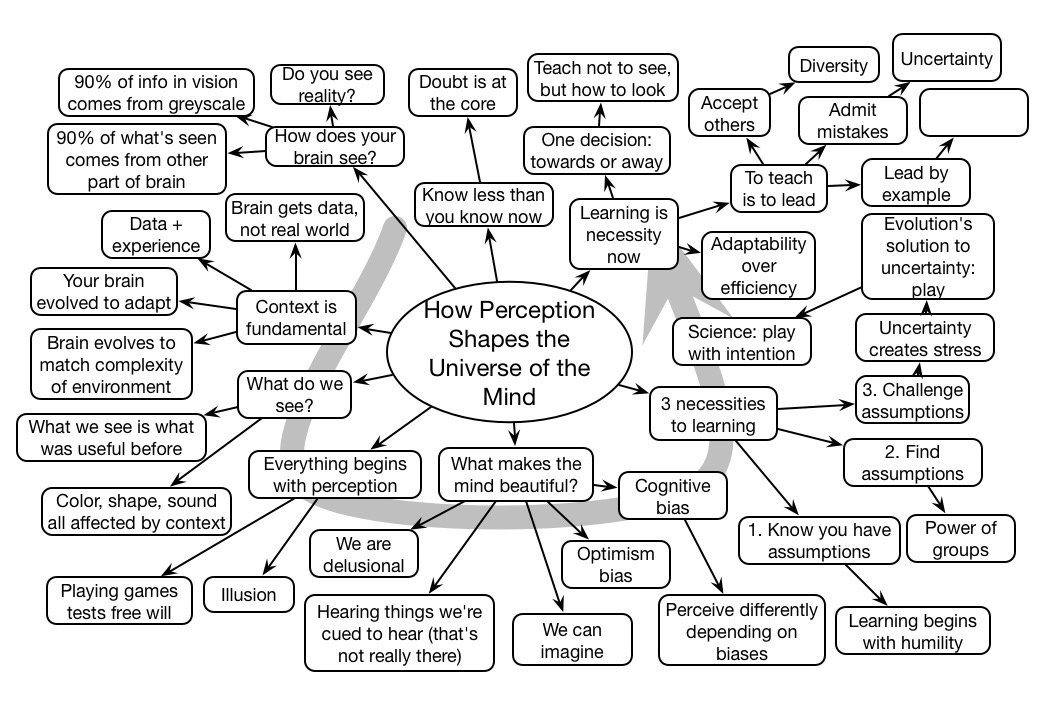This past week I was at the always great DevLearn conference, the biggest and arguably best yet. There were some hiccups in my attendance, as several blocks of time were taken up with various commitments both work and personal, so for instance I didn’t really get a chance to peruse the expo at all. Yet I attended keynotes and sessions, as well as presenting, and hobnobbed with folks both familiar and new.
The keynotes were arguably even better than before, and a high bar had already been set.
Neil deGrasse Tyson was eloquent and passionate about the need for science and the lack of match between school and life. I had a quibble about his statement that doing math teaches problem-solving, as it takes the right type of problems (and Common Core is a step in the right direction) and it takes explicit scaffolding. Still, his message was powerful and well-communicated. He also made an unexpected connection between Women’s Liberation and the decline of school quality that I hadn’t considered.
Beau Lotto also spoke, linking how our past experience alters our perception to necessary changes in learning. While I was familiar with the beginning point of perception (a fundamental part of cognitive science, my doctoral field), he took it in very interesting and useful direction in an engaging and inspiring way. His take-home message: teach not how to see but how to look, was succinct and apt.
Finally, Belinda Parmar took on the challenge of women in technology, and documented how small changes can make a big difference. Given the madness of #gamergate, the discussion was a useful reminder of inequity in many fields and for many. She left lots of time to have a meaningful discussion about the issues, a nice touch.
Owing to the commitments both personal and speaking, I didn’t get to see many sessions. I had the usual situation of good ones, and a not-so-good one (though I admit my criteria is kind of high). I like that the Guild balances known speakers and topics with taking some chances on both. I also note that most of the known speakers are those folks I respect that continue to think ahead and bring new perspectives, even if in a track representing their work. As a consequence, the overall quality is always very high.
And the associated events continue to improve. The DemoFest was almost too big this year, so many examples that it’s hard to start looking at them as you want to be fair and see all but it’s just too monumental. Of course, the Guild had a guide that grouped them, so you could drill down into the ones you wanted to see. The expo reception was a success as well, and the various snack breaks suited the opportunity to mingle. I kept missing the ice cream, but perhaps that’s for the best.
I was pleased to have the biggest turnout yet for a workshop, and take the interest in elearning strategy as an indicator that the revolution is taking hold. The attendees were faced with the breadth of things to consider across advanced ID, performance support, eCommunity, backend integration, decoupled delivery, and then were led through the process of identifying elements and steps in the strategy. The informal feedback was that, while daunted by the scope, they were excited by the potential and recognizing the need to begin. The fact that the Guild is holding the Learning Ecosystem conference and their release of a new and quite good white paper by Marc Rosenberg and Steve Foreman are further evidence that awareness is growing. Marc and Steve carve up the world a little differently than I do, but we say similar things about what’s important.
I am also pleased that Mobile interest continues to grow, as evidenced by the large audience at our mobile panel, where I was joined by other mLearnCon advisory board members Robert Gadd, Sarah Gilbert, and Chad Udell. They provide nicely differing viewpoints, with Sarah representing the irreverent designer, Robert the pragmatic systems perspective, and Chad the advanced technology view, to complement my more conceptual approach. We largely agree, but represent different ways of communicating and thinking about the topic. (Sarah and I will be joined by Nick Floro for ATD’s mLearnNow event in New Orleans next week).
I also talked about trying to change the pedagogy of elearning in the Wadhwani Foundation, the approach we’re taking and the challenges we face. The goal I’m involved in is job skilling, and consequently there’s a real need and a real opportunity. What I’m fighting for is to make meaningful practice as a way to achieve real outcomes. We have some positive steps and some missteps, but I think we have the chance to have a real impact. It’s a work in progress, and fingers crossed.
So what did I learn? The good news is that the audience is getting smarter, wanting more depth in their approaches and breadth in what they address. The bad news appears to be that the view of ‘information dump & knowledge test = learning’ is still all too prevalent. We’re making progress, but too slowly (ok, so perhaps patience isn’t my strong suit ;). If you haven’t, please do check out the Serious eLearning Manifesto to get some guidance about what I’m talking about (with my colleagues Michael Allen, Julie Dirksen, and Will Thalheimer). And now there’s an app for that!
If you want to get your mind around the forefront of learning technology, at least in the organizational space, DevLearn is the place to be.


